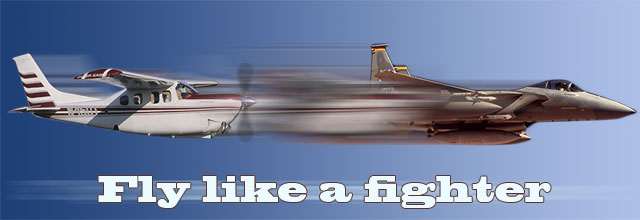
My first Air Force solo was an exciting, uneventful pattern-only flight as a new student in the Cessna T-37 primary jet trainer. On my second solo about a week or so later, I was cleared to go to one of the training areas and practice the acrobatics I had been taught.
I started with a couple of lower-G maneuvers including a few aileron rolls, then a barrel roll, even looking over at the empty seat next to me to remind myself that I was solo. (You know we all did that on our first few solo flights). I then moved on to a high-G maneuver: the loop. I pushed the nose over to about 30 degrees nose low to pick up entry airspeed. A smooth pull got the Gs on the airplane and started my nose up toward the clear blue sky. Once the horizon disappeared under my nose and mostly out of my peripheral vision, I leaned my head straight back into the ejection seat’s headrest to wait for the horizon to appear again on the backside of the loop while inverted.
 I waited. And waited. And waited what seemed like too long and the horizon was not appearing. All I saw was blue sky all around me. A glance at my instruments indicated I was in a near vertical climb and my airspeed was rapidly decreasing through 40 knots. Not good! It was time for my training to kick in and execute a nose-high recovery. I verified the throttles were still full forward then attempted to roll and pull the nose toward the nearest horizon—except that I was so slow that even with full stick deflection the plane didn’t respond. As Goose said to Maverick in Top Gun, “We’re going ballistic!”
I waited. And waited. And waited what seemed like too long and the horizon was not appearing. All I saw was blue sky all around me. A glance at my instruments indicated I was in a near vertical climb and my airspeed was rapidly decreasing through 40 knots. Not good! It was time for my training to kick in and execute a nose-high recovery. I verified the throttles were still full forward then attempted to roll and pull the nose toward the nearest horizon—except that I was so slow that even with full stick deflection the plane didn’t respond. As Goose said to Maverick in Top Gun, “We’re going ballistic!”
It didn’t take much longer for the airspeed to peg below registering anything, when physics took over and rudely changed my windscreen view from pure blue to a complete face full of brown earth as the jet flopped over itself into a near vertical dive. That was worse than the nose high problem. Then it was time for a nose-low recovery. The throttles came to idle and I attempted to pull the nose up toward the horizon. Since the airspeed was back to only 40 knots, the controls still wouldn’t do anything. I cautiously added some power to get some flying airspeed back and was finally able to pull the nose back up to level flight.
Then I flew the infamous solo student border patrol—leisurely laps in level flight around the perimeter of the area while my brain, adrenaline, heart rate, and bodily functions slowly returned to normal.
During my debriefing, it was obvious that I quit pulling back on the stick to properly complete the loop. The great news was that I recovered the jet the way I was taught so that I am able to write about it today. While most of us don’t get to fly loops and rolls, we were all trained in recovering the airplane to include stalls and go arounds. If you haven’t performed these since your last checkride, maybe this month would be a good time to practice them so that if you need to do them for real, you, too, can come back and tell the rest of us about it.
Larry Brown of Colorado Springs, Colo., is a retired Air Force F-15 pilot who is using the lessons he learned as a fighter pilot as a GA pilot in his Cessna P210. Brown, who has 2,700 hours total time during his 33 years of flying, also was an instructor pilot and flight examiner in the Air Force T-38 and instructor pilot in the T-52, the military’s version of GA’s Diamond DA40. See previous installments of “Fly like a fighter.”



